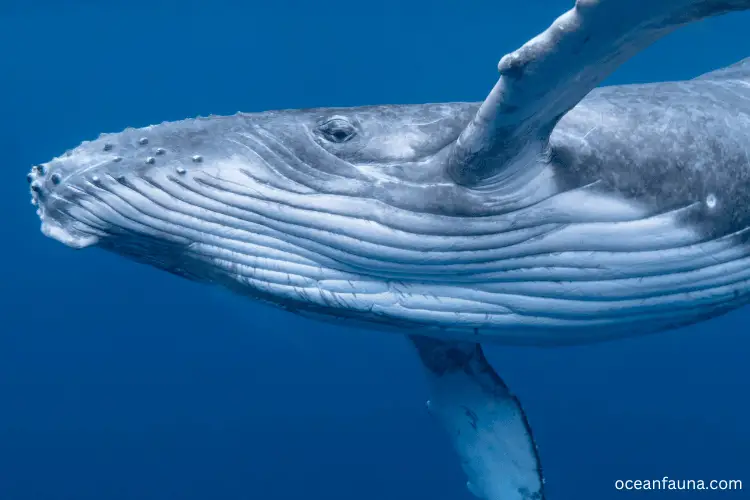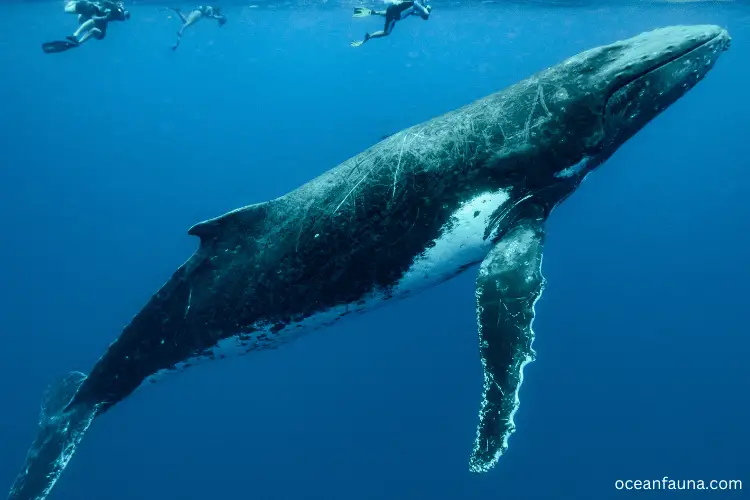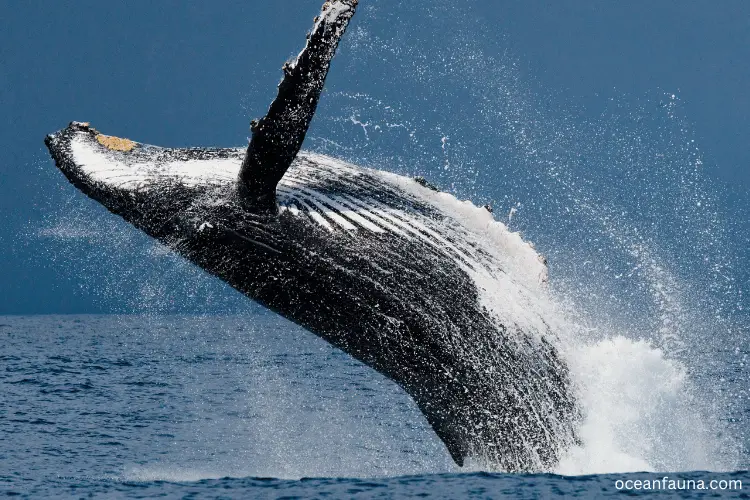As you know, whales are mammals. But do whales have hairs like other mammals? Surprisingly, yes. Whales do have hair when they are born. While most species shed this hair as they mature, certain species retain their hair throughout their entire lives.
You might be curious to know which whales shed their hair and which ones keep it. Fear not! This blog will provide answers to all your questions. Furthermore, I will explain the reasons why whales have hair and explore the various purposes it serves. So, without any further delay, let’s dive into detail.
Do Whales Have Hairs?
Yes, whales have hairs, but not all whales retain them throughout their lives. These hairs, known as sensory hairs, are present in whales when they are born. The number of hairs found on a whale is relatively small, typically ranging from 30-100, depending on the species.
Baleen whales, a group of filter-feeding whales, have hair follicles, some of which are still visible in some species, even when they attain full size. The humpback whale, for instance, has hairs on the bumps on its head, known as tubercles. Each tubercle contains a single hair follicle, and getting close to a humpback whale may enable one to see them.
Meanwhile, toothed whales, a group that includes dolphins, porpoises, and killer whales, have hair along their snouts. However, they lose these hairs entirely shortly after birth. Toothed whales, unlike baleen whales, hunt prey directly and do not require the elaborate filtering mechanism provided by baleen.
Despite losing their visible hair, whales continue to depend on their sensory hair to navigate underwater. These fine, almost invisible hairs detect currents and movements in the water, enabling the whales to navigate through their vast ocean habitat with minimal effort.
Where Are Whales Hairs Located?

Like other mammals, whales have hairs, but they are not located in the same way as in other mammals. The hair follicles in whales are found where land mammals would have whiskers today. While some whales, such as baleen whales, still have hair follicles, these hairs are not for insulation, unlike in other mammals like polar bears. Instead, they play an important role in giving the whales a heightened sense of their environment.
One of the most fascinating examples of hair follicles in whales can be seen in humpback whales. They have numerous bumps on their head, mouth, and even on their flippers that are called tubercles. Each of these tubercles is actually a hair follicle where a single hair grows. It can reach up to 2 feet long and is the sensitive structure known as vibrissae.
Vibrissae in humpback whales can detect movements in the water, such as the path of nearby fish or the current of the water. These hair follicles also aid in reducing drag on the whales’ flippers during movement. In essence, the hair follicles on whales adapt to their aquatic lifestyle and help them survive in their respective environments.
Why Do Whales Have Hairs?
You already know that whales have hairs by birth. Some retain them, and others shed them. But do you know why they have hair? Well, several theories are there in this regard.
One possible explanation for the presence of hair on whales is that it is a remnant of their evolutionary past. Whales are believed to have descended from land-based mammals, and the hair may have served a purpose in their terrestrial environment.
However, as whales evolved to become fully aquatic creatures, the hair became less useful and eventually became vestigial. This theory suggests that the hair on whales has no function in its current form and is simply a byproduct of their evolutionary history.
Another theory proposes that the hair on whales has a sensory function. Numerous nerves around the hair follicles suggest that the hairs may be used to sense something in their environment. Perhaps whales use their hairs to detect prey or changes in the water, similar to how whiskers work on some land mammals.
Additionally, the hairs could be used as a sensory tool for communication between individuals, especially mothers and calves. For example, a mother whale may use her hair to nudge her calf into a particular position or to indicate that it’s time to nurse.
How Do Whales Lose Their Hair?

Whales are also known as cetaceans. They have adapted to living in the water, and most of them lose their hair as they mature. This adaptation reduces friction and improves locomotion, but the precise molecular mechanisms underlying hair loss in cetaceans are still not completely understood.
Recent studies have investigated the molecular basis of hair loss in cetaceans and have provided some new insights into this process. Two key genes, Hr and FGF5, are known to be indispensable regulators of the hair cycle, and changes in these genes may have played a role in the evolution of hair loss in cetaceans.
Positive selection for the FGF5 gene in cetaceans may have promoted hair growth termination and early entry into the catagen stage of hair follicle cycling. This disrupted the hair follicle cycle and eventually led to complete hair loss due to the loss of Hr gene function in cetaceans.
The Hr gene is responsible for encoding a protein that regulates hair follicle cycling, and changes in this gene may have affected hair loss in cetaceans. In contrast, the FGF5 gene plays a role in hair follicle development and morphology, and changes in this gene may have influenced the hair loss process.
Hair loss in cetaceans is likely the result of a complex mechanism rather than a single gene or pathway. While the molecular basis of hair loss in cetaceans remains an active area of research, the current evidence suggests that Hr and FGF5 gene changes may have played an essential role in the evolutionary transition of cetaceans from land to water, leading to the complete loss of their hair.
Functions of Whales’ Hairs
Although most whales lose their hair as they grow, they have some functions. Here are some functions of whales’ hairs:
Thermoregulation
The hairs of whales play a crucial role in regulating their body temperature. They provide a layer of insulation that keeps the whale warm in cold water. Whales are warm-blooded creatures that maintain their internal body temperatures higher than that of the surrounding water. The hair traps a layer of air against the skin that helps in reducing heat loss from the body.
Sensory Organs
Whales’ hairs act as sensory organs that detect changes in water pressure, temperature, and movements. The hairs are connected to nerves that send signals to the brain, allowing the whale to sense the environment around them. The hair also contains sensory cells that detect vibrations and sound waves, which help whales locate prey, communicate, and navigate through the water.
Protection from External Elements
Whales’ hairs provide a layer of protection against external elements, such as parasites, debris, and foreign objects. The hair on the skin helps in reducing the friction between the whale’s skin and the water, making it easier for the whale to move through the water. Additionally, the hair on the flippers and tail fins act as aerodynamic surfaces, assisting the whale in swimming more efficiently.
Communication
Whales’ hairs also play a significant role in communication. Some species, such as the humpback whale, use their hair to create unique sounds used in various communication forms, such as courtship, territorial disputes, and warning signals.
Conclusion
Hopefully, now you have a detailed knowledge about whales’ hair. Whales are extraordinary marine mammals with several unique adaptations to their aquatic environment. One of those adaptations is the presence of hair on their bodies and fins. Although most cetaceans lose their hair as they mature, the hair that remains serves an important role in thermoregulation, sensory organs, protection from external elements, and even communication.

